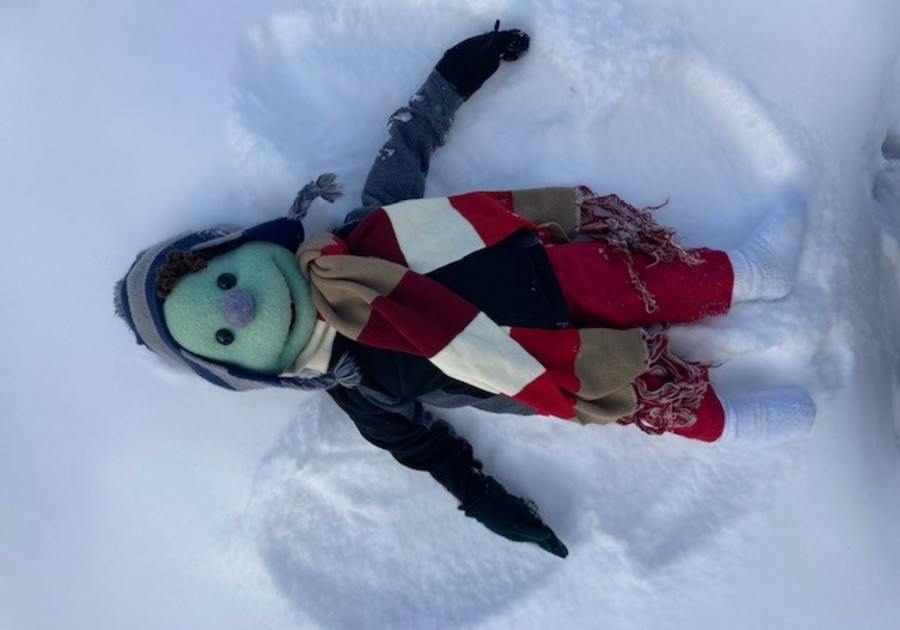Winter is here, bringing cold, snow, and plenty of opportunities for fun! While it’s easy to stayncozy indoors, don’t miss out on the joys ofnplaying outside with your child. Outdoor play not only strengthens your bond but also supports your child’s speech, language, and physical development.
Here are some simple, fun winter activities to help your preschooler staynactive and build their vocabulary.
Get Moving and Get Talking!
Children learn best through hands-on activities, and exploring the snowynoutdoors introduces them to new words and experiences. Bundle up and head outside!
1. Make Snow Angels
Making snow angels is a classic winter activity that’s also great for language development. Before going outside, talk about the clothes you need: “Wenneed to put on your hat, gloves, boots, jacket, scarf, and snow pants to staynwarm.” While making snow angels, give step-by-step instructions: “Sit down. Now lie on your back. Move your arms up and down like a bird flying. Etc.”
Use simple words for younger kids like "open" and "close." For older children, add descriptive words: “The snow feels crunchy” or “Your angel looks lopsided!”
Talk about what you see and feel: “The snow is so cold on my face!”
2. Shoveling Snow
Kids love moving snow around! Turn shoveling into a fun and educational activity.
- Describe the snow: “This snow is fluffy. Is it heavy or light?”
- Compare: “Your shovel is full, but mine is only half full.”
Talking about textures and using describing words like “wet,” “sticky,” or “light” helps build your child’s vocabulary.
3. Tossing Snowballs
Make snowballs together and turn it into a game.
- Toss snowballs into a target like a hole in the snow or a container.
- Talk about size, distance, and height: “This snowball is big! How far can you throw it?”
- Count how many snowballs land in the target.
These activities introduce important concepts like counting, measuring, and comparing while keeping the conversation flowing.
4. Creating Snow Sculptures
Encourage creativity by making snowmen or other sculptures.
- Ask questions to get your child thinking: “What should we use for the snowman’s nose? How can we make it look like it’s smiling?”
- Use natural decorations like sticks, pinecones, or rocks.
- Teach action words while working with the snow: “Pack the snow,” “Roll the ball,” or “Lift it up high.”
Let your child’s imagination shine by asking fun questions like, “What if the snowman came to life?”
5. Making Tracks in the Snow
Take a walk in the snow and play with movement. Give fun directions: “Walk in a straight line, then in a zigzag.” Talk about the tracks you make: “Look, my tracks are big and deep!” Use the activity to teach words about movement and shapes, like "circle" or "line."
6. Hide and Seek in the Snow
Hide an object like a mitten or ball in the snow and give directions to find it.
Use simple instructions: “Take two big steps forward. Now turn to the left.”
Once your child finds the object, let them hide it and give you directions. This activity builds listening and problem-solving skills while practicing words like “under,” “next to,” and “behind.”
Stay Active and Keep Talking
Once you are back inside, nestled with a good book and a hot cocoa, keep it going. Recap your day today: “We made big snow angels, and we heard birds chirping. What was your favourite part?” Talking about past events builds memory and storytelling skills.
Winter play is a great way to combine fun, exercise, and language development. With these activities, your child will build vocabulary, learn new concepts, and strengthen their communication skills—all while enjoying the magic of winter.
So, grab your hat and gloves, and head outside for some snowy fun!
Enjoy winter and boost your child's language skills!
Learn more:
- Visit the First Words website at www.firstwords.ca.
- Follow us on Instagram at @firstwords_psl.
- If you are concerned about your child's communication development, complete our First Words Communication Checkup online screening tool. It is free, quick and easy to use. You can screen, get results and refer if needed in one single activity.


